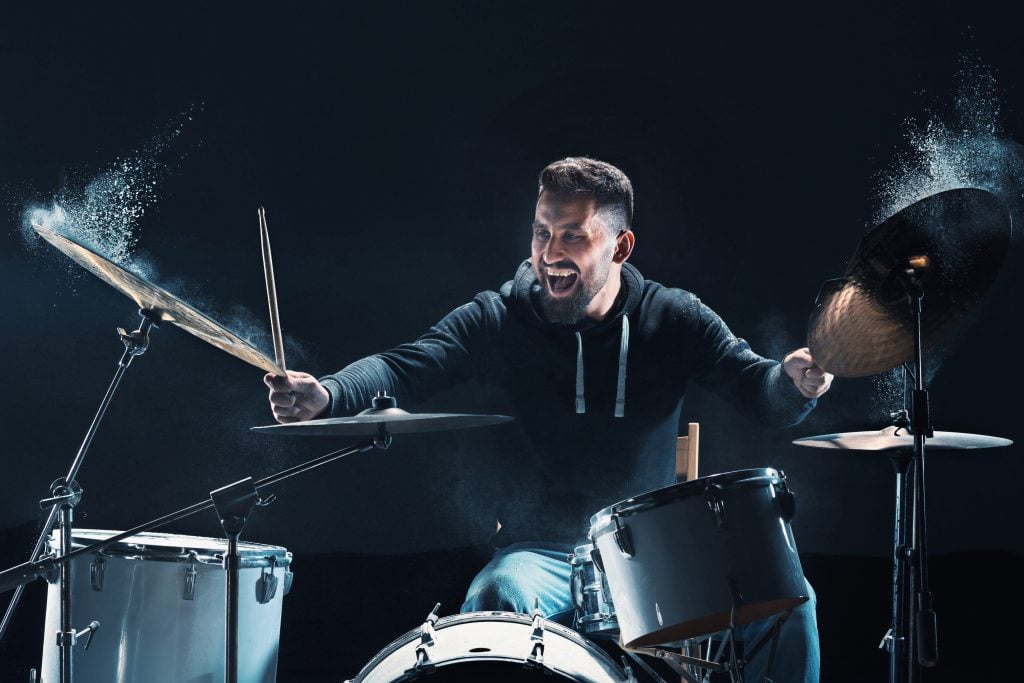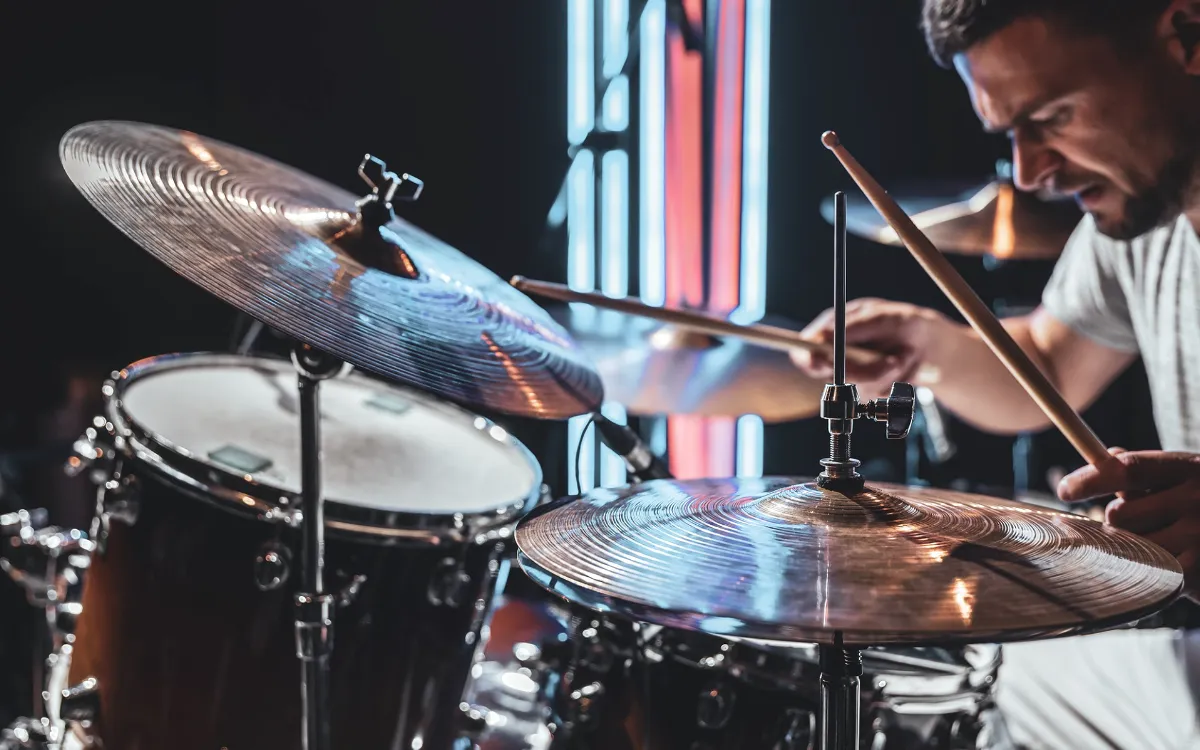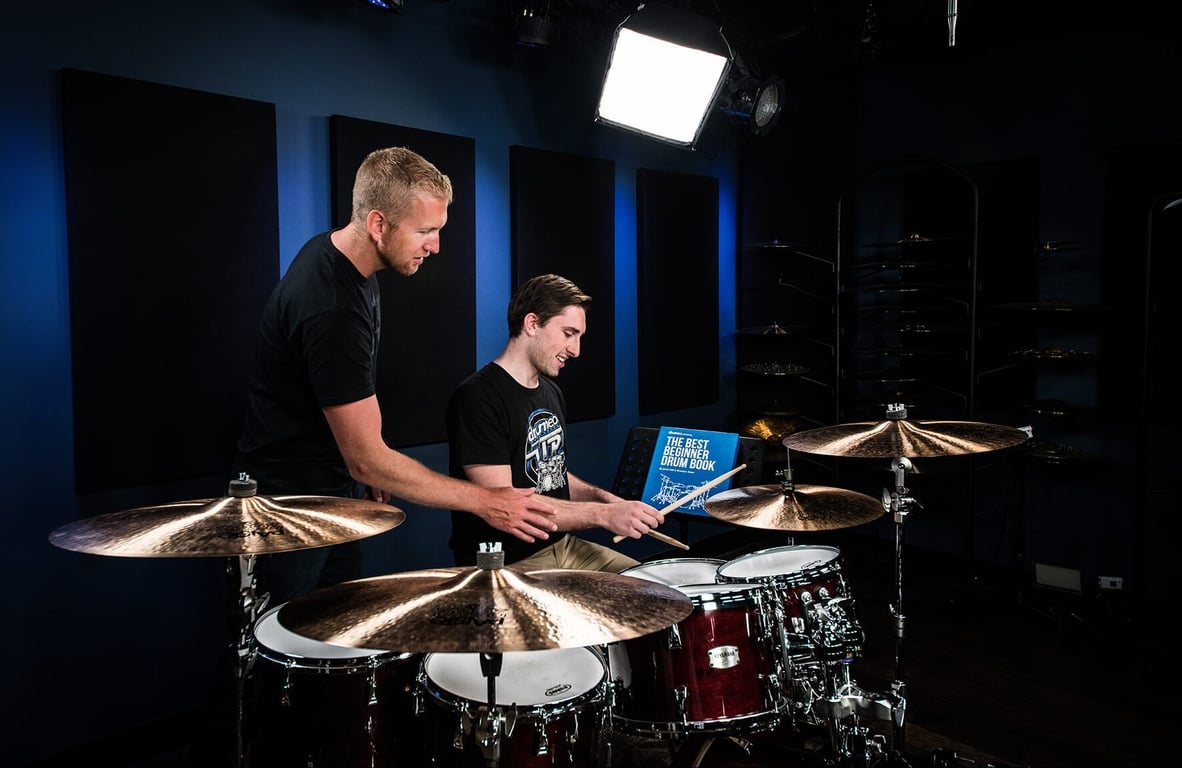Drumming: it’s not just thunderous beats and epic solos. Turns out, it might be the secret weapon in your fitness arsenal. Forget treadmills and elliptical machines – we’re talking about a full-body workout that’s as exhilarating as effective. But before you invest in a drum set and unleash your inner rockstar, you might be wondering: is drumming good exercise?
In this article, we’ll find out the world of drumming as exercise. So grab your metaphorical drumsticks, because we’re about to rock your workout routine!
Contents
Is Drumming Good Exercise?

Absolutely! Drumming can be a fantastic exercise, offering a range of benefits for both your physical and mental health. Here’s a breakdown of why:
Cardio powerhouse: Drumming can get your heart rate up and blood pumping, providing a great cardio workout. Depending on the intensity and style of drumming, you can burn up to 600 calories per hour, similar to other moderate-intensity workouts like running or cycling.
Full-body workout: Drumming engages multiple muscle groups at once, from your core and arms to your legs and glutes. It strengthens your core for stability, works your back muscles for posture, and even builds coordination and dexterity.
Joint-friendly: Unlike high-impact exercises, drumming is relatively low-impact on your joints, making it a good option for people with joint pain or limitations. The bouncy nature of the drums can even help improve bone density and flexibility.
Mood booster: Drumming is a fantastic stress reliever and mood enhancer. The rhythmic nature of playing can induce the release of endorphins, leaving you feeling happy and energized. Plus, the act of creative expression can be incredibly rewarding and boost your self-confidence.
Brainpower: Drumming also benefits your cognitive function. It requires coordination, focus, and memory, which can improve overall brain health and even help slow down age-related cognitive decline.
How Many Calories Do You Burn Playing Drums?
Playing drums is not just about creating rhythm and music; it can also be a great way to burn calories and stay fit. Whether you’re sitting behind a drum kit or playing hand drums, you can expect to burn a significant amount of calories.
1. Drum Kit Playing:
When you’re playing on a traditional drum kit with multiple components, such as drums, cymbals, and pedals, you’re engaging your arms, legs, and core muscles. The continuous movement required to maintain a fast tempo can make drumming on a kit a vigorous workout. On average, an hour of drum kit playing can burn between 200 to 400 calories or more, depending on the intensity and duration of your session.
2. Hand Drumming:
If you prefer hand drumming, such as playing the djembe, congas, or bongos, you’re still engaging your upper body and core muscles. Although hand drumming may not require as much footwork as drum kit playing, the intensity can vary with the speed and vigor of your rhythms. On average, an hour of hand drumming can burn approximately 200 to 300 calories.
3. Comparing Calorie Burn with Other Activities:
Let’s compare the number of calories burned while playing drums to some other common physical activities. It’s important to note that these calorie burn rates are approximate and can vary based on factors like your weight, intensity, and duration of the activity. Here’s a comparison for a 180 lb (81 kg) person:
| Activity | Calories Burned per Hour |
|---|---|
| Drum Kit Playing | 200-400 calories |
| Hand Drumming | 200-300 calories |
| Road Biking (12 mph/19 kph) | 3,402 calories |
| Running (8-minute mile pace/4:58 per km) | 840 calories |
| Swimming (moderate effort) | 600 calories |
| Walking (4 mph/6.4 kph) | 338 calories |
As you can see, drumming may not burn as many calories as intense activities like road biking or running, but it can still provide a significant workout. Plus, drumming offers the added benefits of improving coordination, increasing mental focus, and reducing stress.
What Muscles Does Drumming Work?

When it comes to drumming, you may be surprised to learn that it engages more muscles than you might expect. Here are the key muscles that get worked when you play the drums:
1. Core Muscles:
Drumming requires stability and balance, which means your core muscles play a significant role in supporting your movements. As you sit or stand and maintain your posture while playing, your abdominal muscles, including the rectus abdominis and obliques, are actively engaged.
2. Forearms:
Drummers rely heavily on their forearms to produce the powerful beats and rhythms. With each stroke of the drumsticks or hands on the drumhead, the muscles in your forearms, including the flexor and extensor muscles, are constantly in action.
3. Triceps:
To generate the force needed to strike the drums, your triceps work in conjunction with your forearms. The triceps, located at the back of your upper arms, are responsible for the extension of your elbows and contribute to the power behind every drumming movement.
4. Calves:
Drumming can also be a workout for your lower legs. Whether you’re using a bass drum pedal or engaging in double bass drumming, your calves are constantly working to control the pedals and maintain the rhythm. Over time, drumming can help strengthen and tone your calf muscles.

Frequently Asked Questions:
Is drumming good for blood pressure?
Drumming can help reduce stress, lower blood pressure, and boost the immune system, according to several studies. Establishing a healthy rhythm in your drumming practice can have these positive effects.
Does drumming tone your arms?
While drumming may not directly tone your arms, regular practice can increase the endurance of the forearm muscles, resulting in slight toning and potential size increase.
How much weight do you lose drumming?
During a typical drumming session, you can burn 200-500 calories. An hour-long performance can burn up to 1,000 calories, equivalent to 78 minutes of leisurely swimming or 10,000 steps at a walking pace.

Hello, I’m Ravindra. Over the years, I’ve immersed myself deeply into the world of fitness and health, transforming both my body and mind. Writing has allowed me to share my journey, insights, and expertise with those just starting out and seasoned fitness enthusiasts alike. Beyond just routines and diets, I believe in inspiring others to adopt a holistic approach to well-being.

Awesome, drums are fun and good exercise.